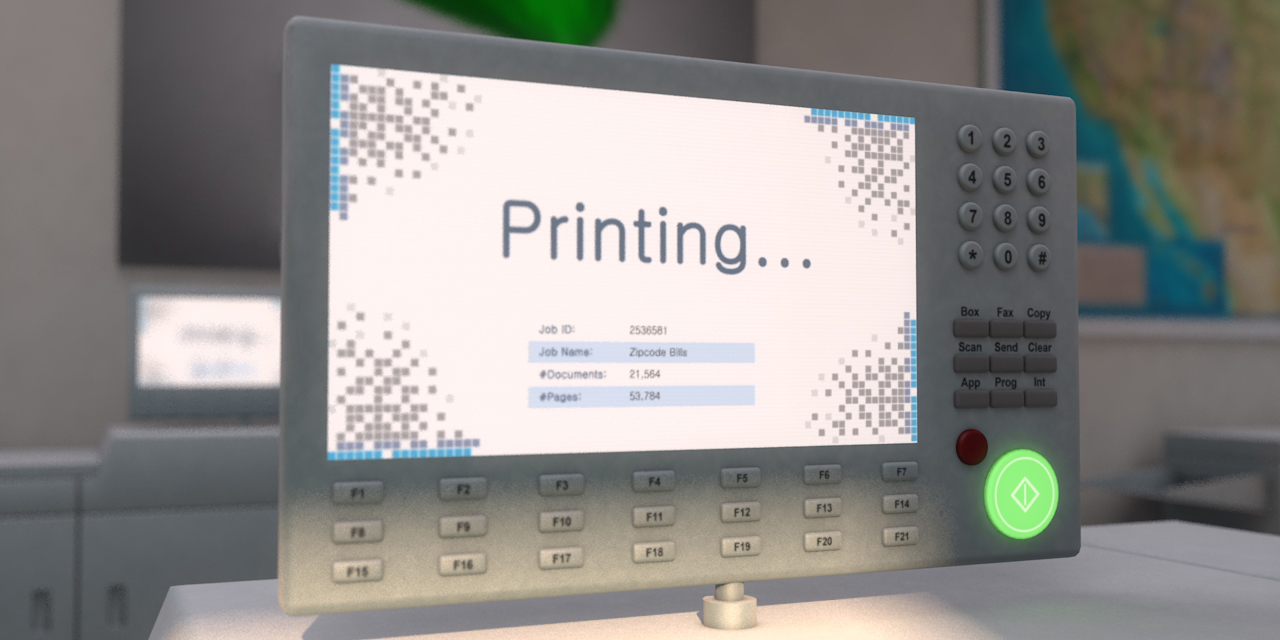
Last November, the Gartner Symposium / ITxpo 2016 was held in Barcelona, one of the world’s most important gatherings of CIOs and Senior IT executives. The renowned IT research and advisory company took advantage of the event to provide a strategic vision of the main trends that will dominate the technological panorama next year and which will demand the attention of any company that wants to be up to date and stand out for their innovative and avant-garde business model and strategies.
Firstly, a printing process optimization software solution allows organizations to reduce costs, save time and cut back on resources. As simple as that. Well-informed and efficient management teams know for sure that they will save up to 30% on their printing costs, which can amount to 5% of a company’s billing. Broadly speaking, this is achieved by applying print optimization protocols, which, among other actions, direct very large print jobs to high-speed printers; compress print files; display messages that request the end users to confirm single-sided printing; automatically delete jobs with incorrect paper size settings; or suggest an alternative printer when a print device is not operational.
Benefits of Print Process Optimization Software
Monitoring and controlling: Print process optimization software allows organizations to monitor and report all printing done within the company, through statistics, user interfaces, log files, etc. In other words, the system gives the company full control over what is printed, when and where, which has a strong impact on business processes, production and costs.
Lower environmental impact: Though print optimization you have the ability to send jobs to more efficient printers reduces waste, saves toner and optimize archives, which also reduces energy consumption and mitigates the environmental impact of the company, while saving time and money;a very appealing combination of benefits.
Toner Saving and Printing Costs: Many print optimization solutions offer the option of configuring toner saving settings according to printer name, department or user profile, which substantially reduces costs. In addition, those systems help reduce several key cost aspects of printing, such as consumables, servers and assistance from the IT department, which would undoubtedly like to see end users become more autonomous and need less support.
Optimizing print files: When files are very large, print processes are slowed down. However, with the right print optimization software, print files can be compressed without compromising document quality. This, in turn, reduces bandwidth consumption and speeds up print processes, especially when they involve remote printing (for example, from one office to another or from the employee’s home to the customer’s premises).
The following figures serve to illustrate that the above-mentioned print optimization results are tangible and not mere theory:
- Most companies spend between 3 and 5% of their annual billings in printing. Given the large turnover of many companies, any savings on that percentage is more than welcome
- The average ratio of users per printer is usually around 6:1. Adequate print optimization software allows serving up to 30 users with a single printer. In other words, efficiency and performance increase exponentially as better service is provided with less devices.
- Each print server costs a company more than 4,000 USD per year on average, so it is a matter of capitalizing on that investment.
- Around 40% of print jobs allow for two-sided printing, which means that end users are often not sufficiently aware of potential paper savings. Therefore, print optimization software interfaces should operate insistently, asking users to confirm if they really want to print single-sided. Hopefully the day is near when we are all more resource consumption aware and most businesses truly operate with sustainable consumption and production policies.
- An estimated 20% of printed documents are never collected. Therefore it is vital that print jobs be left unprinted and can be easily deleted. Seeing forgotten documents in the printer output tray should already be a thing of the past.
In short, there has never been a better time than now to study the changing offer of print process optimization software solutions, in order to centrally control printing and ensure viability of those processes in the future. Whoever is not on board of the cart of print technology innovation, will undoubtedly pay for their lack of vision and passive attitude and face higher print costs.
Data sources:
- http://incovo.com/blog/output-management-print-management-software
- http://whatsnext.nuance.com/office-productivity/optimize-document-workflow-drive-printing-environment/
André Klein
Freelance Consultant for DocPath
